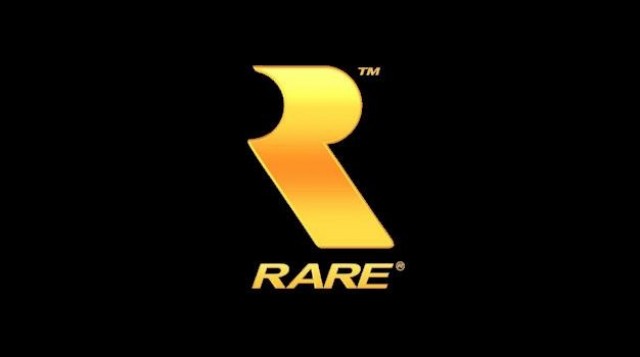
A huge marketing push was made by Nintendo for Banjo-Kazooie, who believed that Rareware’s new platformer was going to be as big as Donkey Kong Country or Goldeneye. When Banjo-Kazooie came out in the summer of ’98, lightning struck for the umpteenth time and Rare had another massive hit. The game was gorgeous, much more so than had been seen up to that point on N64. While not as groundbreaking as Super Mario 64, fans took to Banjo and his cooky friends, and Rare had its new mascot. Development on a number of other high profile releases was continuing in the background, and the Stamper brothers’ company was brimming with confidence. Sadly, lurking beneath the surface, cracks were starting to form. Some Rare staffers were finding themselves less and less enthused being employed by the Stampers, as their bosses were notoriously hard workers that expected the same from their employees. Unfortunately, the Stampers’ definition of hard work grated with enough people that dissent was beginning to grow.
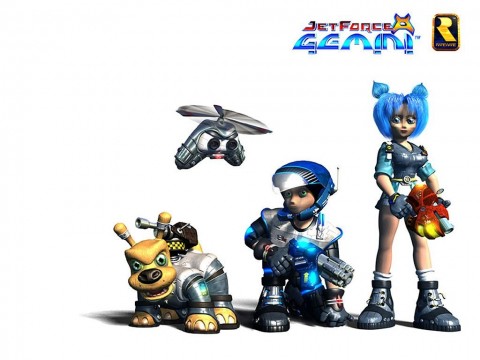
The brothers, in spite of having multiple projects in the works across both N64 and Game Boy, made the effort to be involved with nearly everything that was going on at Rare. Many former Rare workers insist that the Stampers were very magnanimous and didn’t often meddle with their workers’ projects, but others have expressed just the opposite view over the years. Whatever the truth might be, there’s no denying that a number of Rare employees left the company during this timeframe to go their own ways. At first, these losses weren’t very noticeable, but following Banjo-Kazooie, the incredible sales numbers and critical praise were ceasing to be a guarantee. 1999 brought the much-hyped Jet Force Gemini, a third-person shooter with sci-fi themes and a trio of heroes, and Donkey Kong 64, the 3D reinvention of the Donkey Kong Country games. Jet Force Gemini was met with mostly praise, but the game didn’t reach the sales numbers of Banjo or other previous titles. Donkey Kong 64 fared much better, but critics were harsh about what they perceived to be an unnecessary fixation on gathering collectibles. While neither game was by any means a failure, Rare’s momentum was starting to peter out.
The year 2000 saw N64 enter into its twilight years, but Rare still had a few more cards up its sleeves. Not all those cards were aces, sadly; Mickey’s Speedway USA was a fairly pedestrian kart racer that didn’t come anywhere near the quality or ambition of Diddy Kong Racing. The game didn’t light up the charts, but there was still hope in the form of the followup to Goldeneye called Perfect Dark. Fans had been clamoring for a sequel to Rare’s Bond adventure, but the company decided to forego the license and develop its own character for the new game, instead. Banjo had been so appealing to fans that Rare wanted to devote more effort to building its own roster of characters for future franchises. Joanna Dark replaced 007, but was every bit as compelling as her male counterpart. Perfect Dark launched in the summer of 2000, and served as the last big sales hurrah of Rare’s time on N64. Perfect Dark garnered a number of rave reviews and sold in the millions, and further legitimized the company as an industry-leading creative force. Rare still had one, final game to offer N64 players, but it was almost doomed from the start.
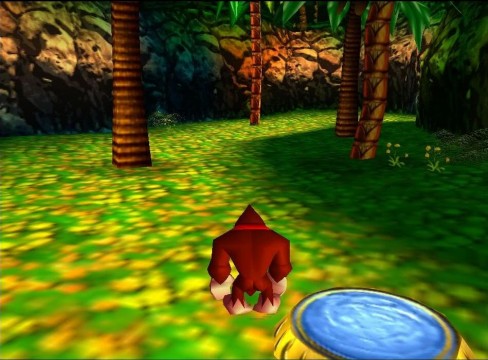
Banjo wasn’t the only character who made his debut in Diddy Kong Racing, as it’s also the game where Conker the squirrel made his first appearance. Conker had to wait quite a while before finally appearing in his own title, as Nintendo and Rare spent years showing glimpses of a 3D platformer similar to Banjo-Kazooie but kept pushing back the release date. When Conker finally arrived, it was as a Game Boy Color title called Conker’s Pocket Tale. While entertaining in its own right, it still left fans wondering what was to become of his N64 game. In 2001, players got their answer, and not all of them were able to go along for the ride. In an effort to keep Conker from being another throwaway animal mascot, Rare made the squirrel into one of the most vulgar, obscene, and offensive characters to ever grace a Nintendo console.
Conker’s Bad Fur Day maintained the 3D platformer feel of its previous builds, but was rife with sexual themes, drinking, urinating, and rampant potty humor. The shift was so extreme that the Nintendo Power player’s guide for the game had to be sold in black polybags! Skewing the game away from the younger audience that had come to expect something markedly milder from the still-adorable squirrel was a stroke of creative brilliance, but made Bad Fur Day struggle for sales. While a devout following was cultivated from those who did play the game and walked away impressed, Nintendo basically washed its hands of the title, offering virtually zero marketing for Bad Fur Day. Regardless, Rare was again prepping for another system launch, but little did anyone know that it would prove to be the final one with Nintendo.
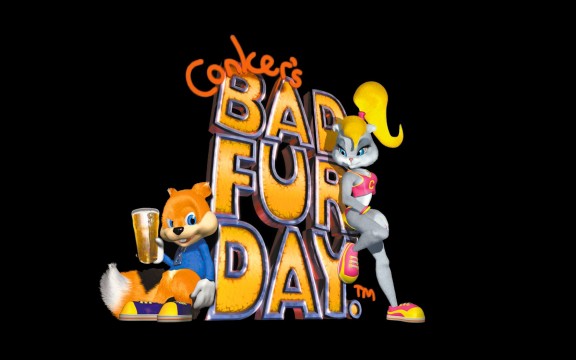
The last game that Rare ever made for a Nintendo home console was GameCube’s Star Fox Adventures. The game released in 2002, about a year after the system’s launch, and was met with decent sales and mostly positive critical reviews. Star Fox Adventures featured rich graphics and a style of play similar to the Zelda series, but it proved to be more polarizing than anyone anticipated. Most critics might have appreciated Fox’s new game, but fans’ opinions of the title were more dour, as it hardly resembled the on-rails action of the first two installments of the Star Fox series. Part of the reason for the huge gameplay shift was that Star Fox Adventures was originally an entirely different title called Dinosaur Planet. Legendary Nintendo designer Shigeru Miyamoto thought that one of the characters Rare had designed looked quite similar to Fox McCloud and suggested transforming the new game into a Star Fox title. Rare made the switch, but as time has passed, Adventures has become a black sheep to Star Fox fans; whether the game would be more fondly remembered as Dinosaur Planet will never be known. It’s around this time that Rare’s workers finally became aware of something that the Stamper brothers had known about for a while; the company was being sold.
The brothers had been shopping Rare around to a number of potential buyers, including Activision, at one point. News of the sale was very much on the down low, but as the Stampers got closer to making their decision, they began pulling in key personnel to discuss the coming change. It’s unclear if Nintendo or Rare was the first to begin pulling away from the other. Nintendo 64 hadn’t been a failure, but its sales never quite reached those of SNES, and GameCube’s future was looking uncertain. With dwindling third-party support, Nintendo was at quite the crossroads at the beginning of the 2000s, so it’s possible that Rare smelled blood in the water and wanted to find clearer seas to sail. On the other hand, Nintendo’s own analysts might have been aware of workers’ rumblings of discontent at Rare, as well as personnel losses; coupled with diminishing returns on some of Rare’s more recent projects, Nintendo might have been apprehensive about the company’s sustainability. Rumors suggest that when Rare made its financial pitch to Nintendo president Hiroshi Yamauchi, the shrewd leader offered a substantially lower amount in response, which would indicate that Nintendo had reservations about the company’s value. Whoever blinked first is irrelevant, as Rare was ultimately sold to Microsoft on September 24, 2002.
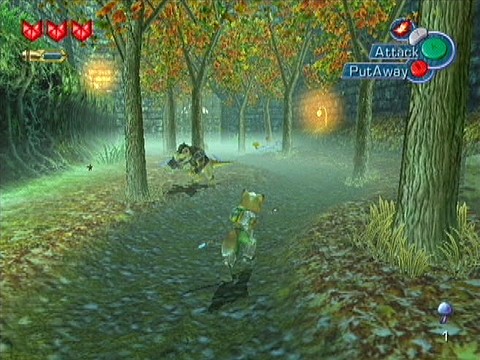
In the years since, Rare has become a shadow of its former self. Initially, Rare seemed committed to putting out the same sorts of creative titles it was famous for in its Nintendo days, releasing a variety of games across Xbox and Xbox 360, but it became clear that Microsoft’s consoles weren’t as seamless a fit for the Stamper brothers’ company. Though some titles received critical praise, many of Rare’s efforts were either dismissed by critics, sold poorly, or both. In 2007, after many years of success and accolades, Tim and Chris Stamper left Rare, and seem to have taken the company’s heart and spirit with them. Fans today have spent many years now thinking of Rare as a company that makes Kinect Sports titles and Xbox avatar items, but it wasn’t that long ago that the development studio was a visionary force in the video game industry. The Stamper brothers did what few others have; they stood with Nintendo as equals creating some of the best games ever made. In an industry afraid to break from convention, Rare was unmatched in its desire to bring new and exciting experiences to players across the world, and left a legacy of excellence in its wake.
With that, dear readers, you have the history of Rare with Nintendo. What do you think of the impact Rare had on both Nintendo and the video game industry? Is the studio deserving of its praise, or is it overrated? Sound off below!




 ShareThis
ShareThis







I live very close to where these guys grew up. It’s a bit weird how they’ve disappeared off the radar.
Wonderful over-view and summary.
One aspect of the N64 generation that this article misses however is the impact the PlayStation was having throughout it.
When the N64 launched, Nintendo was still considered the king of the throne. Yet, as the next couple years went by, key franchises starting moving over to the Sony console (Final Fantasy being the major one). The promise of more creative control and storage space didn’t hurt either.
Soon, as amazing as Nintendo’s past may have been, they clearly didn’t understand a gamer’s priorities when they would not only lose all Final Fantasy, Chrono Trigger, and Mana properties – but then never even bother to fill the gap. Somehow, progress for Nintendo went from having several hundreds of titles available, with dozens of them being timeless (for the average gamer) on the SNES, to having around a hundred titles available, with a dozen or so being timeless (for the average gamer) on the N64.
What I never see mentioned, anywhere, is the real reason why Nintendo got the “we just have collectable games” moniker. Because a great majority of the titles on the system were collect-a-thons. As much praise as you may heap upon Banjo-Kazooie, it wasn’t the really colourful world, or the intriguing story-time narrative that grabbed my attention, instead, it was the endless pile of notes, and combs, and jingos, and they probably had coins and balloons in there somewhere too that I had to endlessly vacuum up.
Perhaps that wouldn’t have been that noticeable, but as the article stated, the majority of releases on the N64 came from both Nintendo and RARE. If you wanted a guarantee of a great game – you would look for the “N” or the “R.” So, people kept going to these games expecting the same breadth of diverse game-play as seen on the SNES – and found themselves collecting red coins in Super Mario 64, and bananas in Donkey Kong 64, and jingos in Banjo-Kazooie, and more jingos in Banjo-Twooie, and even in Conkers and Jet Force Gemini you had to pick up stuff – there was nary a three-dimensional environment to be found whose sole purpose wasn’t you collecting a bunch of useless crap.
Also; advertising. With RARE and Nintendo being the safe bets, the majority of collect-a-thon games were the ones played loudest over the speaker. For every Banjo-Tooie game, you have at least one Body Harvest, Space Station: Silicon Valley, Super Smash. Bros., Conker’s Bad Fur Day, or Turok: Dinosaur Hunter. But those games never received any television attention, which was something people still watched back in the day.
Added to that the more “Western” style elements of what the PlayStation was offering – zombies in Resident Evil – Escape From New York style spy-protagonist in Metal Gear Solid – alongside a huge heaping of everyone’s favourite Eastern RPGs – and the conversation Sony was having with the consumer was so much more broad in scope and daring than what Nintendo was offering. People who had PlayStations were busy answering their friend’s questions about all these bizarre, cool adventures they were having four to five years into the thing. People who had N64’s were busy telling their friends that their machine does more than play Super Mario 64 and Super Mario 64 type games with less than a year before the GameCube came out.
Perhaps RARE was getting tired and fed-up of seeing their more creative and nuanced projects (Conker’s Bad Fur Day, Blast Corps) getting ignored, while their more straight-forward and been-here-done-this-before games (Banjo-Tooie, Donkey Kong 64) were being touted as the design-paradigm for the system. Back in the SNES days, RARE was all about introducing beautiful graphics and colourful worlds into their titles. But with the N64, and their desire to bring story-telling more distinctly into that fold (Perfect Dark, Conker’s Bad Fur Day), titles such as Donkey Kong and Banjo, which received the attention and Nintendo-backed fan-fare, relied heavier on the 2-dimensional character aesthetic (What you see is what you get). Watching the video-game world literally grow up on the competitors machine, while having your forward-thinking ideas and most brilliantly polished works end up swimming in obscurity, I could understand the “enthusiasm” and “motivation” for RARE and the Stamper Brothers not really being there any more.
By the time the GameCube hit, they couldn’t even pretend to like the collect-a-thon format any more, as seen with the relatively forgettable Star Fox Adventures.
RARE was brilliant – but I believe the direction and emphasis Nintendo wished to take their “brand” played in direct contrast to what RARE wanted to do with the new tools being presented to them. Unfortunately, being tied so close to one another, they couldn’t work with separate mission statements. Or, more realistically, Nintendo wouldn’t let them, especially with their increased stake in the company (and having lost so much 3rd party support so quickly).
The Nintendo-RARE relationship benefited Nintendo throughout its entire life-time, but really benefited RARE the most during the SNES days. I couldn’t help but believe that as an independent company, or with a publisher that was willing to advertise some of their more risky and daring projects, the company might not have disbanded in the fashion it did. Having visited the local video-game store recently, I took a look at their selection of used games. A copy of Conker’s Bad Fur Day on the N64, with a scratched label, was selling for $240. That’s more than they were asking for a used Wii-U.
Think about that for a moment.